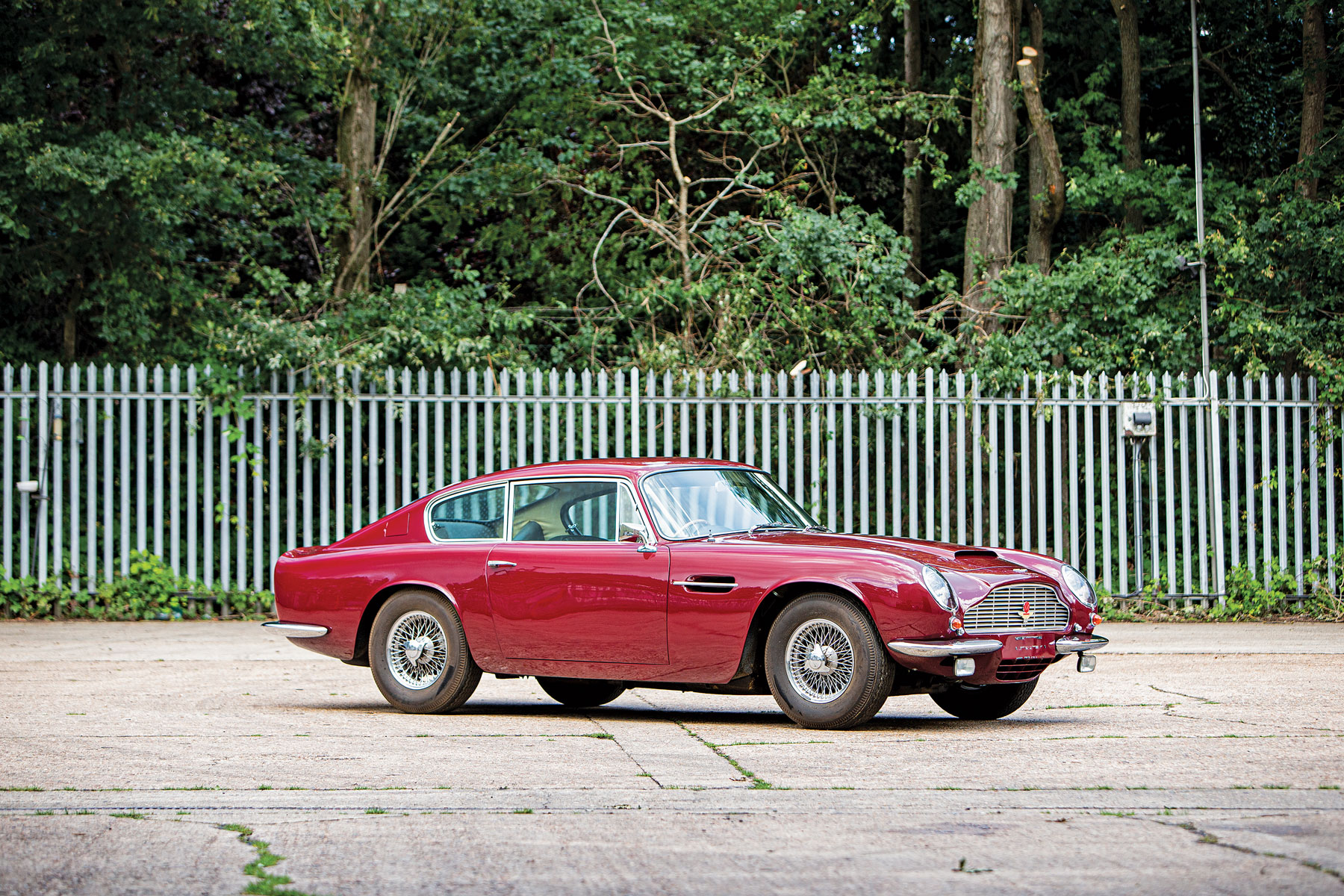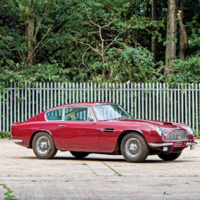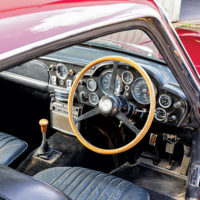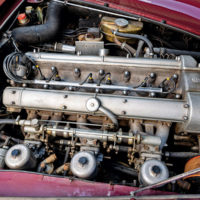SCM Analysis
Detailing
| Vehicle: | 1970 Aston Martin DB6 Mk II |
| Years Produced: | 1966–71 |
| Number Produced: | 1,788 |
| SCM Valuation: | $344,500 |
| Tune Up Cost: | $400 |
| Chassis Number Location: | Plate on right side of scuttle |
| Engine Number Location: | On left of cylinder block next to alternator |
| Club Info: | Aston Martin Owners Club |
| Website: | http://www.amoc.org |
| Alternatives: | 1967–71 Ferrari 365GT 2+2, 1967–72 Aston Martin DBS, 1967–73 Maserati Ghibli |
| Investment Grade: | B |
This car, Lot 447, sold for $196,046 (£141,750), including buyer’s premium, at the Bonhams MPH auction in Beaulieu, U.K., on September 5, 2021.
More than a decade ago, Aston Martins started disappearing from their domestic market, destined for large collections in a sandy place. It appeared that one of every model in every specification and every color was required, and sometimes the acquisitions appeared rather indiscriminate, based on quantity rather than quality.
Over the past couple of years, these cars have been returning to the U.K., and trickling back into the market via auction. It’s been rare for a Bonhams sale of the last couple of years not to have at least one DB6. They tend not to have been driven, so while mileages have not much increased, many cars have deteriorated from lack of use, or in some case, damage. Also common to many of them is lost paperwork, which is both frustrating and galling for the dealers who spent time compiling their histories before the cars were sold overseas. (And yes, these are the same dealers who were in many cases complicit in these cars leaving their home shores for a profit.)
For these reasons, most of these Aston returnees tend to be cheap. Where DB6s were nudging £300k at one time, the current norm for these repatriates is about half that. In today’s U.S. dollars, that’s just over $200k. Cars with complete histories that have stayed in Europe (or gone to the U.S.) still tend to fetch more.
Resale red
That was not the case here. Our subject car was presented under a thick, shiny repaint in a predictable color, with a few bubbles appearing under the windscreen. You know that’s always going to be more serious than it looks on a car prone to electrolytic corrosion between its aluminum body skin and steel supporting structure.
It still sported sandy dust on its tires, and lack of numberplates alerted bidders that it wasn’t U.K. registered. Re-applying for its original number should be a formality, as the DVLA (our licensing authority) does not normally reissue numbers that have already been in circulation, but that’s not really the point. As a returnee to the U.K., it was also liable for a 5% import tax on top of the hammer price and premium.
Though it did have its original engine, it was on triple carbs like the earlier models, rather than the optional fuel injection. (I suspect many that started out injected were converted back when it became too hard to live with.) Inside, the leather was usable but it wore a 1980s stereo that looked well out of place, and the door cards had been cut for matching speakers.
Half the price
As part of the wider picture on valuation, we must address the question of why a DB6 is worth less than half the price of a DB5, when they are superficially similar. There are at least three reasons. (Maybe four, as DB6 production was almost twice that of the DB5.)
The first is that the DB6 has always been perceived to be less sexy. It looks heavier and slightly pregnant with its extended midriff and raised roofline, instantly identified by its unhappily dated and rather “kicked in the arse” Kamm tail. The DB6 is two inches longer, one-and-a-half inches higher and not quite four inches longer in the wheelbase than the DB5. Still, there’s less than 20 pounds difference between the DB5 and its replacement, though the Mk II put on an extra 50, as well.
The second is that by the late ’60s the DB6 was becoming rather outdated. It is quite a different car under the skin, with Aston abandoning Touring’s superleggera (super lightweight) construction of aluminum panels supported by a cage of thin steel tubes in favor of a folded sheet steel structure under the familiar-appearing body. But its live axle was still outclassed by sportier independently sprung Ferraris.
Three: James Bond. Like it or not, populism pushes prices. The DB5 cemented itself as the Bond car, and subsequently “the most famous car in the world” as hard-case Connery’s gadget-packed wheels in classics “Goldfinger” and “Thunderball.” But 007 skipped the DB6 entirely and went straight to a standard DBS for new face George Lazenby in “On Her Majesty’s Secret Service.” The next Bond, Roger Moore, got some effete plastic tat from East Anglia, about which the less said the better. The latest 007 still drives a DB5, and has since 1995’s “Goldeneye,” where it memorably “outruns” a Ferrari F355 GTS.
Restoration is costly
Both the DB5 and DB6 cost a ton to restore properly, so if you’re going to throw half a million dollars at one (at Aston Martin Works prices), it’s better if it’s worth more than that when you’re all done. Before you even think about splashing out for either, I strongly suggest sampling one. It’s always my first suggestion when anyone raves about any DB. Though I suppose they’re no more truck-like than a “Queen Mary” Ferrari.
All this has left the DB6 as a model somewhat in the doldrums, having been caught up by the best examples of the DBS, still lagging well behind the DB4, and usually outsold even by DB Mk IIIs. The trade generally likes Mk IIs best because of the standard power steering, though many DB Astons now have add-on electric assistance, which helps address the point above.
In the present market, I’d call this one correctly or even slightly well sold. I can’t see that changing until the current swamp of needy examples has been drained from the market. Conversely, that can make them an excellent value if you buy carefully. So long as you can stand the stigma of it not being a DB5, that is. ♦



